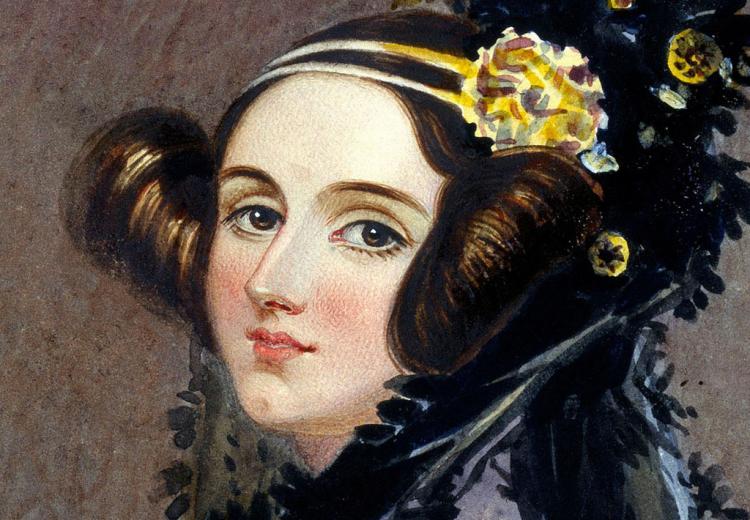Connecting the Humanities and the Sciences

Ada King, Countess of Lovelace, 1840
Instructions: Download each section of the lecture by clicking on the part subtitle so that you can mark it up as you read. We recommend that you read the lecture twice. Do a first reading to get a sense of the overall argument. Then do a second, closer reading to see how the parts fit together. These questions are designed to guide your second reading of the lecture.
Part 1. “Think Different”
-
What purpose does the opening anecdote about novelist Walker Percy serve?
- What insights did the author acquire from writing his biographies of Steve Jobs and Benjamin Franklin?
- According to the lecturer, what is the greatest sentence ever written? What role did Franklin play in crafting this sentence? Why did the author come to this conclusion?
- How did such qualities as “contempt for authority,” imagination, spirituality, and love of beauty serve Einstein in his life and work?
- How does the example of Einstein support the need to teach imagination and creative thinking alongside reasoning and scientific thinking?
- At this point, the author mentions the downside to Einstein’s discoveries. What was it?
- Isaacson follows his discussion of Einstein with his lecture thesis. What is it? Why does he wait until now to introduce this thesis?
Part 2. Two Schools of Thought: The Turing Approach vs. Lovelace Approach
- The speaker introduces us to Ada Byron, Countess of Lovelace, considered to be the “first computer programmer.” Identify two concepts of historic significance that she discovered.
- The author links Ada’s discoveries with two concepts developed a century later by Alan Turning. What are Turing’s concepts and how are they related to Lady Lovelace’s discoveries?
- Explain the two schools of thought (the “Turing approach” vs. the “Lovelace approach”) to the human-machine relationship.
- Identify the contribution of each of the following along the path to artificial intelligence: (1) Mary Shelley’s Frankenstein; (2) 2001: A Space Odyssey’s Hal; (3) John von Neumann’s “mixed procedures”; (4)) Frank Rosenblatt’s Perceptron (machine); (5) IBM’s Deep Blue victory in chess; (6) IBM’s Watson victory in Jeopardy! (7) John von Neumann’s singularity (popularized by science fiction writer, Vernor Vinge).
- What conclusion does the author reach in this section? Describe the challenges in artificial intelligence—what obstacles must be overcome as modern machines evolve into intelligent beings.
Part 3. The Partnership
- What is Licklider’s vision of “Man-Computer Symbiosis”? Why does the speaker believe this will triumph? Provide an example from the lecture to support your answer. Can you think of any drawbacks to this level of symbiosis between humans and machines?
- According to this lecture, even if a machine were able to pass both the Turing test and the Lovelace test, what final hurdle does artificial intelligence face? How would this change the goal of computing? Does this raise any concerns?
- Alan Kay of Xerox PARC and Steve Jobs of Apple are held up as exemplars of this intersection between humans and technology. Describe how these pioneers refute the trend described in the excerpt of the Harvard Crimson article, “Let Them Eat Code"?
Part 4. Final Lesson and Conclusion
-
What lesson does the author draws from his investigation?
- Based upon the argument, do you agree that the next phase of the digital revolution will bring “the true fusion of technology with the creative industries”?
- What kind of future is in store for humankind should this innovative interplay between technology and the creative arts pan out? Is there a shadow-side to this vision that is not discussed by the speaker?
- Consider the last paragraph. According the future the speaker envisions, those “that can connect the arts to the sciences and have a rebellious sense of wonder that opens them up to beauty of both” will thrive.
- Why does Isaacson bring up the idea of rebellion in here? Does this remind you of any figure(s) described in an earlier part of the lecture? How might this trait coupled with an ability to connect arts and science be a winning formula for future humankind?
Note: This essay version has been partitioned and subtitled by the editors in order to facilitate student interaction. It may not conform in all details to the spoken lecture or transcript.
